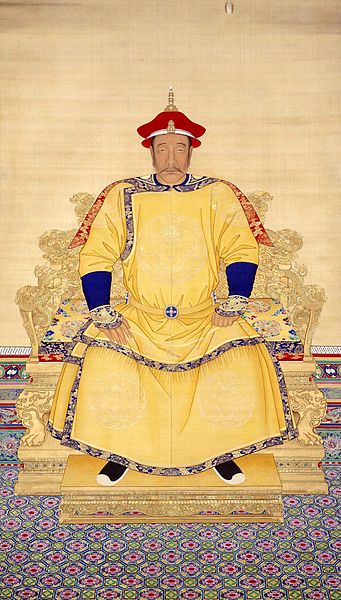Prince He of the First Rank, or simply Prince He, was the title of a princely peerage used in China during the Manchu-led Qing dynasty (1644–1912). As the Prince He peerage was not awarded "iron-cap" status, this meant that each successive bearer of the title would normally start off with a title downgraded by one rank vis-à-vis that held by his predecessor. However, the title would generally not be downgraded to any lower than a feng'en fuguo gong except under special circumstances.
Hongzhou (1712–1770), the first Prince He
The House of Aisin-Gioro was a Manchu clan that ruled the Later Jin dynasty (1616–1636), the Qing dynasty (1636–1912), and Manchukuo (1932–1945) in the history of China. Under the Ming dynasty, members of the Aisin Gioro clan served as chiefs of the Jianzhou Jurchens, one of the three major Jurchen tribes at this time. Qing bannermen passed through the gates of the Great Wall in 1644, and eventually conquered the short-lived Shun dynasty, Xi dynasty and Southern Ming dynasty. After gaining total control of China proper, the Qing dynasty later expanded into other adjacent regions, including Xinjiang, Tibet, Outer Mongolia, and Taiwan. The dynasty reached its zenith during the High Qing era and under the Qianlong Emperor, who reigned from 1735 to 1796. This reign was followed by a century of gradual decline.
Nurhaci on his throne
Nurhaci
Nurhaci
Nurhaci





